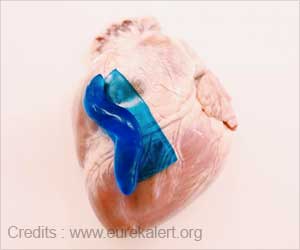Highlights
- Wounds in the mouth heal faster and more efficiently than wounds elsewhere.
- Histatin-1 in the saliva promotes the formation of red blood cells.
- The compound could help in the design of better approaches to improve wound healing in tissues.
The study could help the design of better approaches to improve wound healing in tissues other than the mouth.
The study involved experiments at three levels:
- endothelial, or blood vessel-forming, cells in culture
- chicken embryos as animal models
- saliva samples obtained from healthy donors
"The clear results of the present study open a wide door to a therapeutic advance. They also bring to mind the possible meaning of animals, and often children, ’licking their wounds,’" said Thoru Pederson, Ph.D., Editor-in-Chief of The FASEB Journal.
Six Steps Of Wound Healing
- Rapid hemostasis - When a tissue is injured, it can be seen externally by bleeding. Rapid homeostasis refers to the mechanism that stops bleeding. The body does this process through vasoconstriction. This means that the blood vessels are closed tight.
- Inflammation - Inflammation is the body’s way of alerting about an injury. Beyond that, it helps dictate where the next barrage of healthy cells should be headed. As such, inflammation is vital in the wound care process, but if it goes on for too long, it can actually prevent regeneration.
- Proliferation and migration - When inflammation occurs, the body releases several kinds of cells, including those that are responsible for migration and proliferation. The former function actually refers to the movement of the cells, a carefully coordinated process that involves cells moving in a specific order. Meanwhile, proliferation is similar to hemostasis, as cells work to further constrict your blood vessels.
- Angiogenesis - The body begins to rebuild tissue once the bleeding is under control. Angiogenesis, as it’s called, involves the formation of new blood vessels. This process occurs when your body’s cells begin to replace the veins and arteries that were damaged, either creating new sections or adding onto existing portions. It’s a decidedly complex endeavor, with many chemicals activating to facilitate these all-new veins.
- Reepithelialization - Once the body begins to regrow veins, it’s time to begin regrowth of damaged skin. The epidermis is comprised of cells called keratinocytes, and during the reepithelialization process, the body has to begin forging these chemical components. The process involves the creation of several layers, each working in tandem to offer protection and prevent fluid loss.
- Synthesis - Though it’s seen as the last step, synthesis often happens almost simultaneously. In this process, certain proteins form blood clots, which helps further prevent bleeding as new skin and veins are formed. There are a number of proteins at play, and certain people lack those necessary proteins to form blood clots.
- Vicente A. Torres et al., The salivary peptide histatin-1 promotes endothelial cell adhesion, migration, and angiogenesis, FASEB Journal (2017) doi: 10.1096/fj.201700085R fj.201700085R.
Source-Medindia










